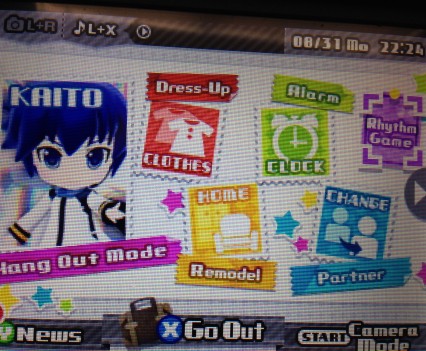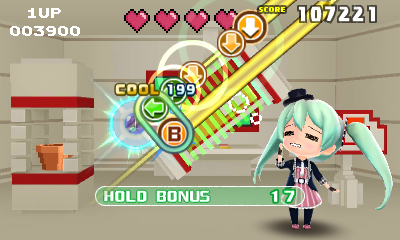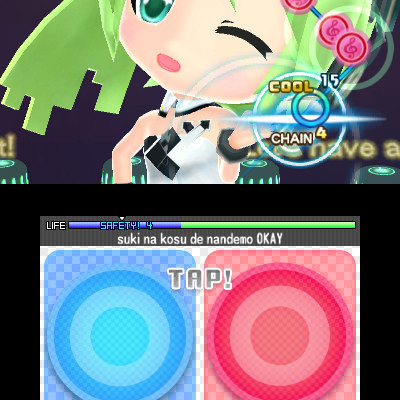Hatsune Miku: Project Mirai DX is a decently crafted experience for mostly enchanted J-Pop fans. Those interested in that particular style of music will absolutely adore this video game to no-end. However, those outside of the J-Pop spectrum will instantly catch-on to the titles inconceivable flaws. Oblivious or not, Project Mirai DX’s noticeable issues include an over-saturated menu screen, long-lasting musicals, and a useless customizable character who ultimately does nothing for the game’s real premise. Very few positives can be said about this video game; even then, those instances are few and far between.
Video games within this particular genre usually possess a simplistic navigational system. They generally display a menu screen that showcases the song selection and their difficulties. This simplistic approach, however, is unfortunately absent in this experience. Instead, Project Mirai DX includes eleven options too many, and it creates an over-saturation of useless choices. For instance, the game possesses a social aspect which allows individuals to “hang-out” and play a sensible game of checkers. This is a complete waste of time and detracts from the essence of the video game; not to mention this social feature is represented more prominently than the rhythm feature– which happens to be the smallest box on the screen and simply labeled, “Rhythm Game.”
At its core, Project Mirai DX closely emulates the gameplay found within Theatrhythm Final Fantasy – which is an experience that has the individual following the music by tapping the notes on the bottom-screen. But the difference between the two is that SEGA fails to keep the player interested and motivated during gameplay. The lack of interest and motivation is due to lengthy musicals that clock-in at about six minutes each. Ideally, tracks should run between 2-3 minutes, that way, individuals playing the video game do not become mentally exhausted between songs. I would have preferred a more “Short-and-sweet” approach to the video game, but the exclusion of this quality is unfortunately a turn-off.
Customizable characters usually possess reasoning behind their existence. In the case of Hatsune Miku: Project Mirai DX, that reason is non-existent and causes its implementation to fall-flat. When I customize a character I want to have the ability to utilize its maximum potential. I want to see them dancing in the background, and I want my custom apparel to project flamboyantly. Instead, Project Mirai DX secludes these individuals to mini-games and social features – none-of-which has anything to do with the games real premise. You can watch them eat or practice their dance moves, but that’s about it, making this a social inclusion rather than a universal implementation.
Hatsune Miku: Project Mirai DX is designed for J-Pop enthusiast and those interested in social interactivity. It unfortunately does nothing for individuals who remain outside of the J-Pop spectrum and includes a lengthy set musicals which may cause mental exhaustion. It supplies the individual with a customizble character who is unfortunately limited to social interaction, and it places a larger emphasis on social interactivity than the video games main premise. Unfortunately, Hatsune Miku: Project Mirai DX is an experience meant for J-Pop fans and no-one else.










